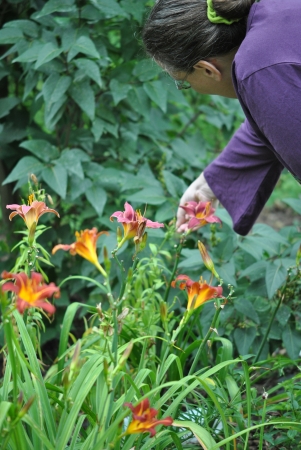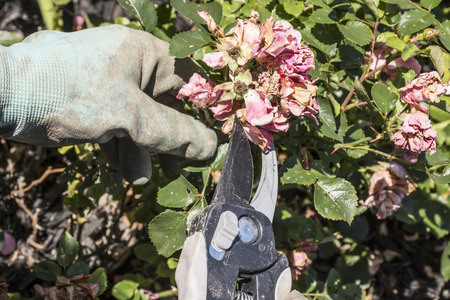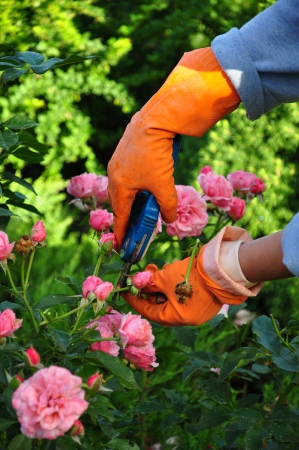The practice of removing spent blooms, fruits and seed heads is known as deadheading. This should be carried out as soon as they become unsightly. Some plants with thick stems will require scissors or secateurs to remove the dead flowers. Other flowers may simply be removed with finger and thumb. But why is this necessary? Below are five reasons that deadheading is recommended.
(1) Deadheading encourages the plant to produce more blooms. A plant’s objective is to reproduce and keep the species alive. It achieves this usually by producing seed. Re-flowering can be encouraged by removing old flowers before the seed is produced. This is because the plants natural instinct is to produce more flowers and therefore more seed to perpetuate itself.

(2) Deadheading will also help to promote stronger and bushier growth. Additionally removal of seed heads from bulbs such as daffodils will allow valuable energy to re-enter the bulb to provide an even more stunning display next year. Foliage should be left intact for around six weeks so the goodness can be reabsorbed.
(3) Some plants such as Poppies will spread seed around the garden, and so what was a beautiful and desirable plant can become an invasive nuisance. Deadheading will prevent this as seed pods can be removed before they spread their seeds.
(4) Large blooms, such as those of the Peony, the Rose and the Camellia, have petals which will blow around the garden. This can be unsightly. Certain petals also sit on the leaves of the plant and rot. This does not improve the appearance of the plant.

(5) Another reason to deadhead your plants is simply to create a clean and attractive appearance for our borders, containers and baskets. This can be compared to removing a spent stem of flowers from a flower arrangement in order to maintain the beauty of the remaining stems.
There are, in a few cases, some reasons not to deadhead your plants. Flowers such as Cornflowers, Sunflowers, and Rudbeckias can be left to produce valuable seed to feed the surrounding wildlife. Some plants will produce attractive hips and fruits if heads are left as nature intended. Also with certain plants you may wish to collect the seed to produce more plants in seasons to come. Other seed heads such as those of Alliums are attractive if left in situ. They can even be left through the winter when they often look attractive touched by frost.
Certain plants need deadheading in different ways. Examples include snapping off the whole stem at the base with Pelargoniums. Alstroemeria prefer to have their whole stems removed at the base by pulling. This wounds the plant in a fashion that will cause it to produce more flowering stems. Other plants can be simply sheared back. However, as a general rule of thumb, cut off the flower stem below the spent flower but just above the first set of healthy leaves.
With this knowledge, what once seemed a tedious task can be seen as essential garden housekeeping which will be repaid in full.
Mark Snelling
All images copyright Gardenforpleasure.co.uk
If you have enjoyed reading our blog post then why not fill in the form provided to allow us to send you our blog posts and newsletters by email.

